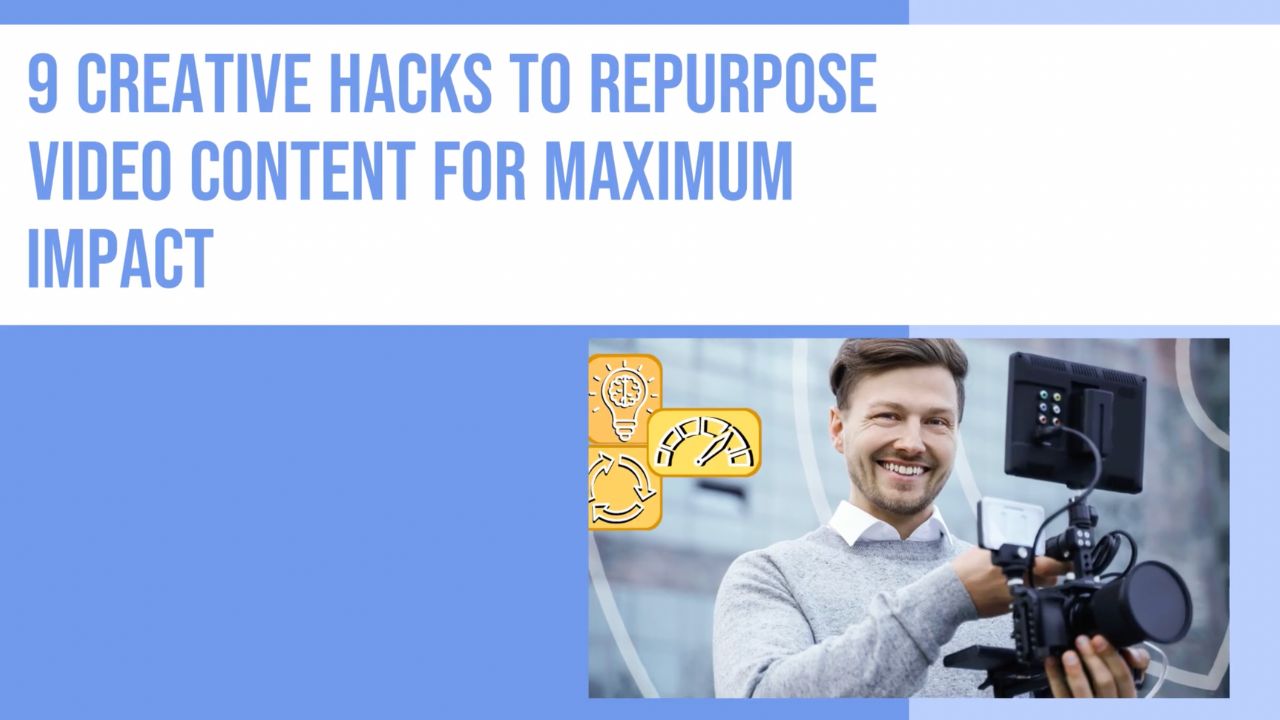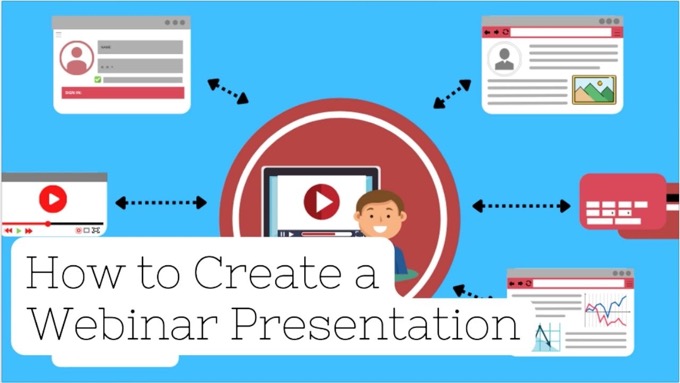Webinars are popular, offering a high level of value (often for free) in an engaging format in return for the attention of attendees.
A well-crafted webinar funnel can be a sales conversion powerhouse, often converting up to 20% to 30% (sometimes more) of attendees into paying customers.
As such, most businesses focus on using webinars for marketing.
After all, compared to hosting in-person live events, they’re relatively quick, easy and cheap to create, organize, and present.
A basic 60- to 90-minute online presentation provides ample opportunity to:
- Connect with your audience
- Illustrate the value you provide
- Convert attendees into customers (who then tend to stick around).
So where do you start crafting a webinar funnel that actually converts?
That’s what you're about to discover, with 10 steps you need to build a webinar funnel that delivers customers, including from cold traffic.
But first, let’s take a look at exactly what a webinar funnel is, and why it's such a valuable marketing tool for businesses…
What's a Webinar Funnel?
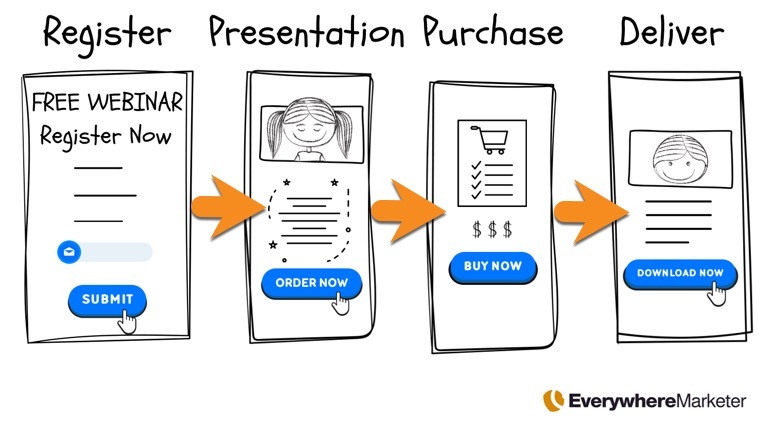
A webinar funnel is designed to lead potential customers along a defined sales path, from initial curiosity to becoming a customer.
Each stage of the funnel is optimized to simply move the prospect to the next stage, and only give them a couple of options—either take the suggested action, or leave.
And people will leave—but don’t worry about it, that’s what should happen!
A well-designed webinar funnel should filter out those who lack any real interest or inclination to buy, with only a certain percentage of people at each stage dropping through the funnel to the next one.
In fact, in terms of setting realistic expectations, it’s very unlikely that everyone who registers for a webinar will actually attend.
The actual percentage will differ widely depending on various factors, such as the quality of the follow-up process prior to the webinar, but on average a study found that around 55% of people who sign up for a webinar turn up as attendees.
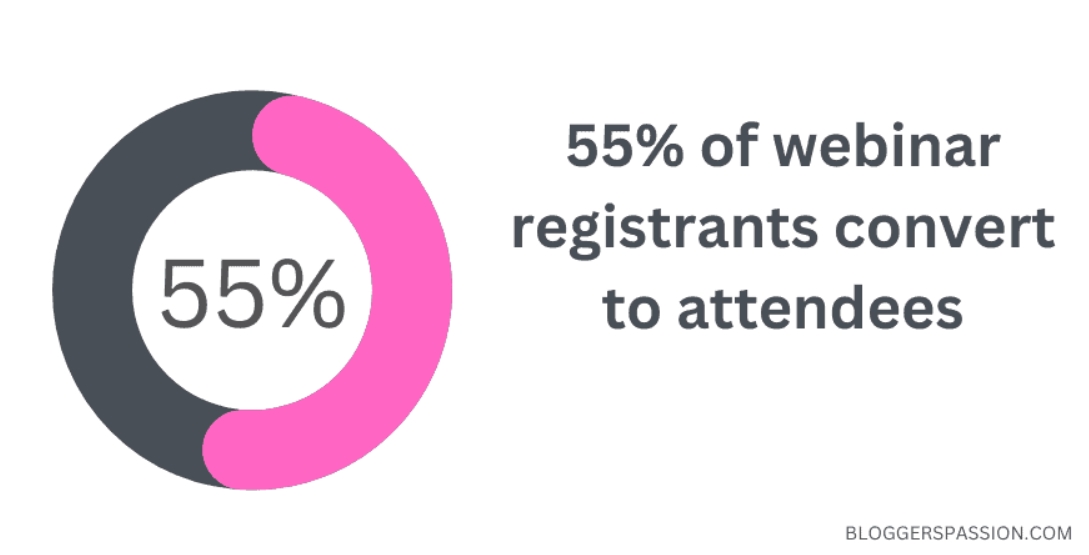
The stages a prospect will go through generally look like this:
- Register for the webinar—this is generally a landing page where the prospect gets some brief information about the webinar, including the topic and the time and date, and can enter their email address and other required information to register to attend.
- Watch the webinar presentation—at the allotted time, the presentation will begin, delivering an extended sales message to the prospect and encouraging them to make a purchase. As a rough guide, 75% of it will be info-rich and deliver a lot of value the attendee can take advantage of, regardless of whether or not they buy; with the final 25% making a compelling offer that (ideally!) the attendee feels they “can’t refuse”.
- Buy the recommended product or service—your prospect converts into a customer and takes advantage of your offer.
- Use and experience the benefits of what they’ve purchased—you deliver what was promised, which the prospect can now take advantage of.
Why a Webinar Funnel Works
A good webinar funnel is highly effective for generating new prospects, including from cold traffic, and relatively rapidly converting them into customers.
It works because you’re able to:
- Grow credibility and authority—the mere fact of running a webinar gives you immediate credibility and authority, and builds trust with registrants, regardless of whether or not they attend. For attendees, by delivering information of value, that authority grows substantially, and helps to underpin often long-lasting customer relationships.
- Interact directly with potential customers—they can hear and often see you, rapidly forming a sense of relationship and trust.
- Explain the benefits of what you sell—attendees are there out of genuine interest in the topic of the webinar, providing you with an opportunity to both deliver value to an engaged audience and explain how their lives can benefit from your product or service.
- Effectively follow up with registrants—when people register, they give you their contact information, enabling you to follow up with them, regardless of whether or not they actually attend.
- Filter out non-interested prospects—at every stage, prospects can decide that what you sell is not for them, leaving you with a core of hot prospects ready to take advantage of your offer.
A single webinar can easily attract as many as 500 to 1,000 new prospects—sometimes even more—and push them through a sales process that delivers value whether or not they decide to buy.
10 Steps to Build a Webinar Funnel That Converts
To craft a webinar funnel that converts prospects into customers, follow the steps described below.
1. Identify Your Ideal Customer
Who are you trying to reach with your webinar? Who’s your ideal customer?
Understand their needs, motivations, and challenges.
Your webinar should offer solutions to your audience's specific problems.

If you’re unsure:
- Use tools such as Google Analytics to get insights into the interests and demographics of your existing visitors.
- Look at your social media analytics to help figure out who is most likely to be interested in your webinar (here are some top tools that can help deliver important insights).
- Analyze your existing customers, looking at demographic information, and their communications with you, including feedback you’ve received (both good and bad).
- Look for the 20% or so of your customer base that represents your best customers—people who love what you do and keep coming back for more. What do they have in common?
2. Set Goals for Your Webinar
What does success look like for your webinar?
Define it clearly to focus your efforts.
Questions to consider include:
- How much revenue do you aim to generate from your webinar?
- What's the average value of a customer over their lifetime with your business? Don’t just focus on the initial sale in terms of the value a webinar delivers for your business.
- How many new customers would allow you to meet your short-term and longer-term revenue targets?
- What offer will you make on your webinar, and how does this impact your objectives?
Remember too that your webinar doesn’t have to be a single, one-off event.
See it instead as the start of a marketing campaign, where the webinar is delivered repeatedly to new audiences, tweaking and optimizing each time to grow your ROI.
3. Choose Your Webinar's Format
Select a format that aligns with your audience and goals. Options include:
-
Lead generation webinars—attract new prospects, including from cold traffic, with the offer of valuable information designed to pique their interest and get them excited enough to register.
-
Product demos—for warmer traffic that already knows something about you, another approach is to deliver a webinar designed to simply demonstrate and highlight your product's features and benefits.
-
Customer onboarding—this may not immediately seem part of a sales conversion process, but after purchase your customers will be wondering if they’ve done the right thing and will need reassurance. A customer onboarding webinar helps assuage any concerns, reduces refunds and cancellations, and helps increase both loyalty and referrals.
4. Pick the Right Webinar Platform
Some quick research on Google will show you there are lots of webinar platforms to choose from.
They tend to do very similar things but approach it all differently, with varying levels of ease of use, support and overall feature set.
Spend some time looking at the various options, look at which platforms others in your industry and elsewhere are using to deliver webinars, and assess what your needs actually are.
Some key questions to think about include:
- What is your expected audience size?
- How compatible does a webinar platform need to be your existing tools and systems?
- What budget do you have available?
- Are you looking for interactive features such as chat and polls?
- Do you need the ability to customize the look and feel for your brand?
- What security features and compliance standards do you require?
- What analytics and reporting capabilities does a particular platform provide?
- What level of technical support do you require?
- What do you need in terms of integrating the webinar platform with your existing CRM or autoresponder?
Once you’ve done some research and created a shortlist, try them out—most will have a free trial of some kind or if not, will usually offer a money-back guarantee if you decide it’s not for you.
5. Craft Your Webinar Landing Page

Your landing page is crucial as it's the start of your funnel and determines how many prospects flow through to the other stages.
Make sure to include the following:
- A catchy headline that clearly states the value your webinar offers—your prospects will be subconsciously asking, “What’s in it for me?”. Make it as clear as possible.
- A concise description of the event—it’s often effective to have a handful of bullet points that state the benefits attendees will get from the webinar.
- The webinar’s date and time, and how long it will last. If people from different time zones will see the page, either make it clear what time zone applies, show the time for different time zones, or localize it for each visitor. Again, make sure it’s as clear as possible to avoid confusion.
- A simple sign-up form where visitors can enter their contact details and register.
- A clear call-to-action so visitors know exactly what you want them to do.
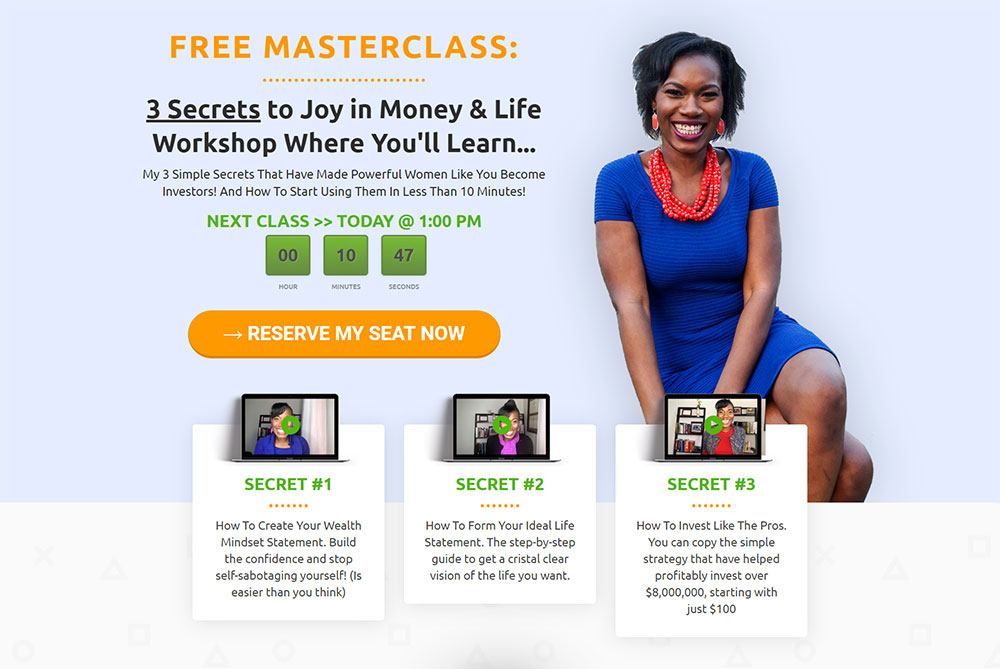
Many webinar platforms will have registration pages built in that you can then customize as required, or you can host one on your own website that’s then integrated with the platform in question.
Test it thoroughly to ensure contact details are collected in the right way.
Crafting a compelling webinar landing page with clear messaging and a strong call to action boosts registration ratesClick To Post OnThank You Page
Don’t forget the thank you page too to show to people after they’ve registered.
It doesn’t have to be anything fancy, but keep the same look and feel as the registration page, and simply thank them for registering and confirm the details of the webinar again.
6. Promote Your Webinar
Once you’re ready to start attracting registrants for your webinar, there are multiple ways to promote it including:
- Social media—spread the word to your different audiences, using engaging and creative posts. Using a unique event hashtag can generate excitement.
- On your website—options including using banners or pop-ups on your site to make visitors aware of your webinar and attract sign-ups. Timers can add urgency and boost sign-ups.

- Email marketing—don’t forget to let your existing prospect list know about your webinar. Segment your email lists to increase response. As well as promotional emails, use CRM email automation to help manage confirmations, reminders, and follow-ups too.
- Paid ads—use platforms like Google Ads and Facebook Ads to reach cold traffic, existing audiences, and people who showed an initial interest but didn't register via retargeting ads (they may have simply got distracted and will value the reminder!)
7. Deliver a Valuable Webinar
This is of course crucial.
There’s no room here to cover everything you need to create and present an effective webinar, but we have a separate guide that tells you everything you need to know.
Watch the following quick overview, and then click here for the full guide.
8. Use a Call to Action
Don’t forget to use an effective call-to-action (CTA) in your webinar that tells attendees exactly what to do to take advantage of your offer.
Ensure your CTAs are easy to understand, appealing, and simple to follow!
9. Follow Up and Establish an Evergreen Funnel
The majority of the sales generated by your webinar are actually likely to come after the presentation itself has finished, particularly if you have a time-limited offer.
And a proportion will come from people who didn’t attend the webinar live, but who watched a replay afterwards.
And some will just buy based on the quality of your follow-up, even if they never actually attended or watched the webinar itself!
Following up with attendees post-webinar and establishing an evergreen funnel maximizes conversions and extends the lifespan of your contentClick To Post OnSo… keep in touch with a well-crafted campaign that repeats the benefits of your product or service, clarifies the offer, and reminds them of any deadline.
(A time-limited offer for your webinar is usually the best approach in terms of maximizing your sales conversions).
See this guide on creating an effective email nurture sequence that helps drive prospects over the line.
10. Evaluate Your Success
To make sure your webinars are effective, watch these four key metrics:
- Registration Rate: What percentage of people who see your landing page are signing up? Test different approaches to grow your conversion rate.
- Attendance Rate: What proportion of those who registered came to your webinar to watch it live? Think about how you can improve the numbers in future, such as through your pre-webinar reminder emails and possibly text notifications.
- Engagement Rate: Track if people are talking or answering polls during the webinar. If they're not, how can you encourage higher levels of engagement?
- Conversion Rate: What percentage of people who registered became customers? Again, keep testing different approaches, both for your webinar presentation itself and at all stages in your webinar funnel.
By keeping an eye on all these metrics, you can optimize how your webinar performs in future.
5 Best Practices for a Webinar Funnel That Converts
For an effective funnel, follow these five best practices:
1. Get Attention
Spark interest in your product (or service) with social media, ads, and emails to encourage webinar sign-ups.
To grow your initial registration conversion rate, work out why people aren’t signing up.
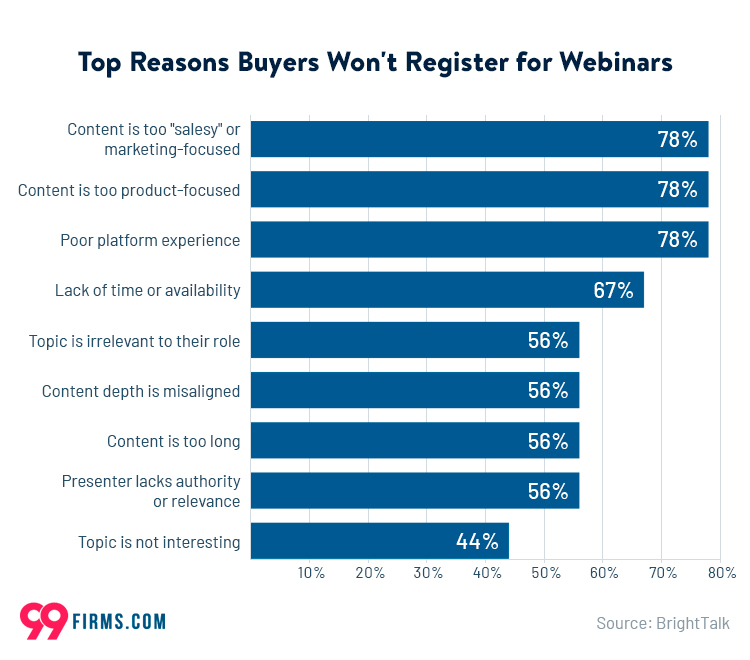
Based on the research shown above, here's why buyers might skip signing up for webinars:
2. Keep Your Prospect Interested
Once someone signs up, keep them excited and remind them of your upcoming event.
Send repeated communications to keep them engaged and remind them of the value you’ll be delivering.
For example, let's say you're holding a webinar on how to make great videos.
After someone initially registers, send them a welcome email to confirm and remind them about some of the topics you'll talk about.
In a later email after another day or two, send them a fun tip or trick about making effective videos that they can put into action right away. And again remind them of your webinar.
This helps keep them interested and helps indicate the kind of value you intend to deliver.
On the day of the webinar itself, send at least a couple of reminder emails—one earlier in the day, one an hour or so before the webinar begins, and another a couple of minutes or so before you go live to remind them to attend..
3. Deliver Value
Be sure to deliver as much value as you can during your webinar, while keeping it focused on your topic, being mindful of the time you have available and not overloading your audience to the extent that they feel overwhelmed.
Whether or not they buy, they should feel it was well worth the time they took out from other activities to attend.
4. Encourage the Sale
Continue to make your offer and provide additional information after the webinar to help encourage people to buy.
Even if they don’t buy now, stay in touch with them.
It may simply not be the right time, but you’ll likely find a healthy proportion will buy at some point in future if you continue to communicate, offer value, and build the relationship.
5. Look After Customers
Stay connected after the sale to ensure they’re able to quickly get value from what they’ve bought and feel assured that you’re there to look after them. Aim to make your customers delighted.
Gather feedback, either for use as potential testimonials in future or to indicate where improvements can be made.
Happy customers are likely to recommend you to others, bringing in additional customers.
Frequently Asked Questions
What is a webinar funnel?
A webinar funnel is designed to lead potential customers along a defined sales path, filtering out disinterested prospects with each stage.
Why is a webinar funnel an effective marketing tool?
A webinar funnel grows credibility, enables direct interaction, explains benefits, filters out non-interested prospects, and efficiently follows up with registrants.
How can I craft a compelling webinar landing page?
Craft a landing page with catchy headlines, concise event descriptions, clear date and time information, simple sign-up forms, and a strong call-to-action.
What are the key metrics to evaluate webinar success?
Metrics to watch include registration rate, attendance rate, engagement rate, and conversion rate to optimize future webinar performances.
How can I promote my webinar effectively?
Promote your webinar through social media, website banners, email marketing, and paid ads to attract attendees and maximize registrations.
To Conclude
You’ve likely gathered by now that a webinar funnel can become a highly valuable asset for your business, able to both attract prospects in significant numbers, build a relationship of trust with them relatively rapidly, and convert a proportion into paying customers.
But remember, even once you’ve created one and got it running, it’s not set in stone. Aim to keep testing different elements of your webinar funnel, try out different things and optimize it over time to increase your ROI.
The initial result you get from your webinar funnel is literally just a baseline that you can then start comparing and testing against to make it increasingly effective.


